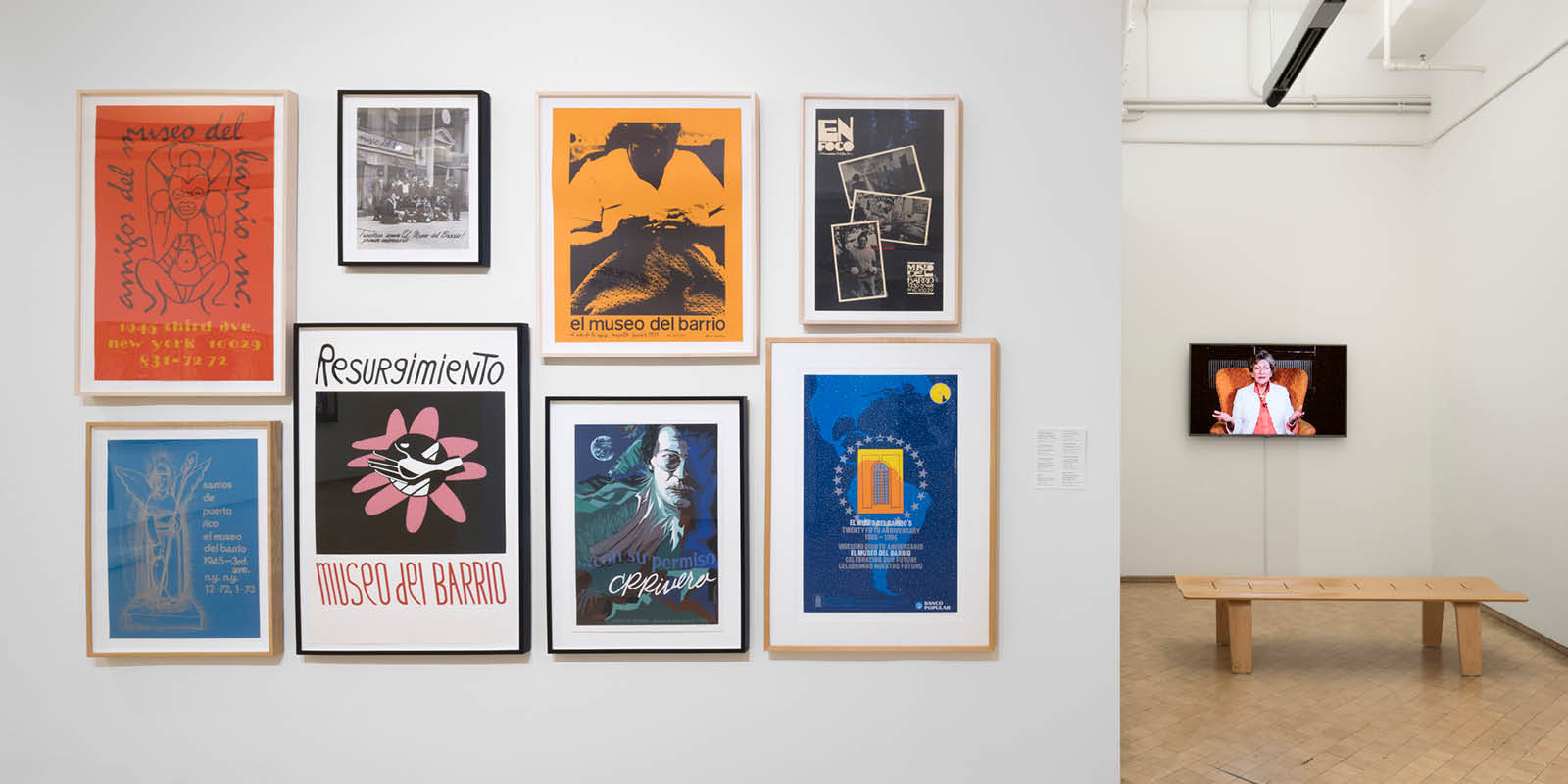In celebration of its 50th anniversary, El Museo del Barrio presents Culture and the People: El Museo del Barrio, 1969-2019, a two-part exhibition featuring selections from the Permanent Collection and a timeline contextualizing the history of the institution with related archival materials. The exhibition will reflect on the institution’s activist origins and pioneering role as a cultural and educational organization dedicated to presenting and preserving Latinx and Latin American art and culture. The exhibition borrows its title from an essay penned by one of the Museum’s founders and its first director Raphael Montañez Ortíz, who outlined his concept for the institution in a 1971 article published in Art in America.
In addition to the two part-exhibition Culture and the People, El Museo will initiate a cycle of exhibitions dedicated to the Museum’s Permanent Collection in 2020. The cycle will focus on specific works from the collection, including room-size installations and in-depth bodies of work, enabling El Museo’s curators to work directly with artists, scholars, and conservators to uncover new research and grant further public access to the Museum’s Permanent Collection.
PART I | Selections from the Permanent Collection
Organized in thematic sections, Culture and the People features selections from the Permanent Collection that explores the legacy of El Museo del Barrio through the concepts of Roots, Resistance, and Resilience.
In Roots, artworks will be presented that address El Museo’s formation within the social and political context of 1969, and its relationship with the artists and local community of El Barrio (East Harlem). This section will also take a more expansive perspective to cultural roots, through works that reference colonial and indigenous ancestries.
In direct response to the Museum’s activist origins, the section devoted to Resistance includes artworks related to protest, gestures of solidarity, dictatorship, and exile. Created in homage to national heroes and fallen martyrs, as well as commemorating specific events, these pieces address historical political grievances and relate to contemporary events such as the ongoing border crisis.
The final section, Resilience, recognizes El Museo’s ongoing commitment to its mission. In this section, works related to the construction and expression of self- identity will be displayed, alongside images that reflect a sometimes subversive or humorous method of survival. This section will culminate with a presentation of artworks that speak to personal and collective resilience, as well as the continuation of cultural traditions.
Each section will feature artists of diverse cultural backgrounds and generations, and will range from indigenous art and artifacts to contemporary paintings and installation art. A number of the pieces on view will relate to multiple sections, inviting audiences to recognize echoes and dialogues between the pieces on display. The exhibition will feature new acquisitions as well as artworks that have never been publicly presented, in addition to artworks familiar to El Museo audiences.
Featured Artists
ADÁL, Ignacio Aguirre, ASCO, Myrna Báez, Diógenes Ballester, Tony Bechara, Charles Biasiny-Rivera, Tania Bruguera, Ramón Cabán, Roger Cabán, Rodríguez Calero, Luis Camnitzer, Martín Chambi, Papo Colo, Luis Cruz Azaceta, Felipe Dante, Margarita Deida and Piedro Pietri, Ana de la Cueva, Milagros de la Torre, Perla de León, Bartolomé de las Casas, Marcos Dimas, Nicolás Dumit- Estévez, León Ferrari, Antonio Frasconi, Coco Fusco, Carlos Garaicoa, Domingo García, iliana emilia garcía, Arturo García Bustos, Flor Garduño, Guillermo Gómez-Peña, Félix González-Torres, Muriel Hasbún, Pablo Helguera, Ester Hernández, Gilberto Hernández, Carmen Herrera, Lorenzo Homar, Graciela Iturbide, Alfredo Jaar, Ivelisse Jiménez, Charles Juhász-Alvarado, Shaun “El. C.” Leonardo, Richard A. Lou, Miguel Luciano, Antonio Maldonado, Carlos Marichal, Hiram Maristany, Antonio Martorell, Leopoldo Méndez, Héctor Méndez Caratini, Raphael Montañez Ortíz, Francisco Mora, Arnaldo Morales, José Morales, Rachelle Mozman, Isidoro Ocampo, Francisco Manuel Oller y Cestero, Pepón Osorio, Manuel “Neco” Otero, César Paternosto, Dulce Pinzón, Miguel Rio Branco, Rubén Rivera Aponte, Rafael Rivera-Rosa, Arnaldo Roche-Rabell, Félix Rodríguez Báez, Freddy Rodríguez, José A. Rosa Castellanos, Lotty Rosenfeld, Edgar Ruiz Zapata, Fernando Salicrup, Juan Sánchez, Jorge Soto Sánchez, Taíno Culture, Taller de Gráfica Popular, Rigoberto Torres, Rubén Torres-Llorca, Nitza Tufiño, Rafael Tufiño, Patssi Valdez, Vargas-Suárez Universal, Mariana Yampolsky, the Young Lords Party, and Alfredo Zalce.
PART II | An Institutional Timeline
Complementing the Permanent Collection, El Museo del Barrio presents a second display tracing the historical and cultural trajectory of the institution since 1969. Expanding on previous research about El Museo’s institutional past, the presentation reveals different moments in the Museum’s history as it relates to its leadership and staff, its various locations, and key exhibitions and programs throughout its first five decades. Archival documentation including photographs, posters, invitations, exhibition catalogues, and other ephemera will supplement a detailed timeline to further illustrate and contextualize critical moments in the museum’s history.
